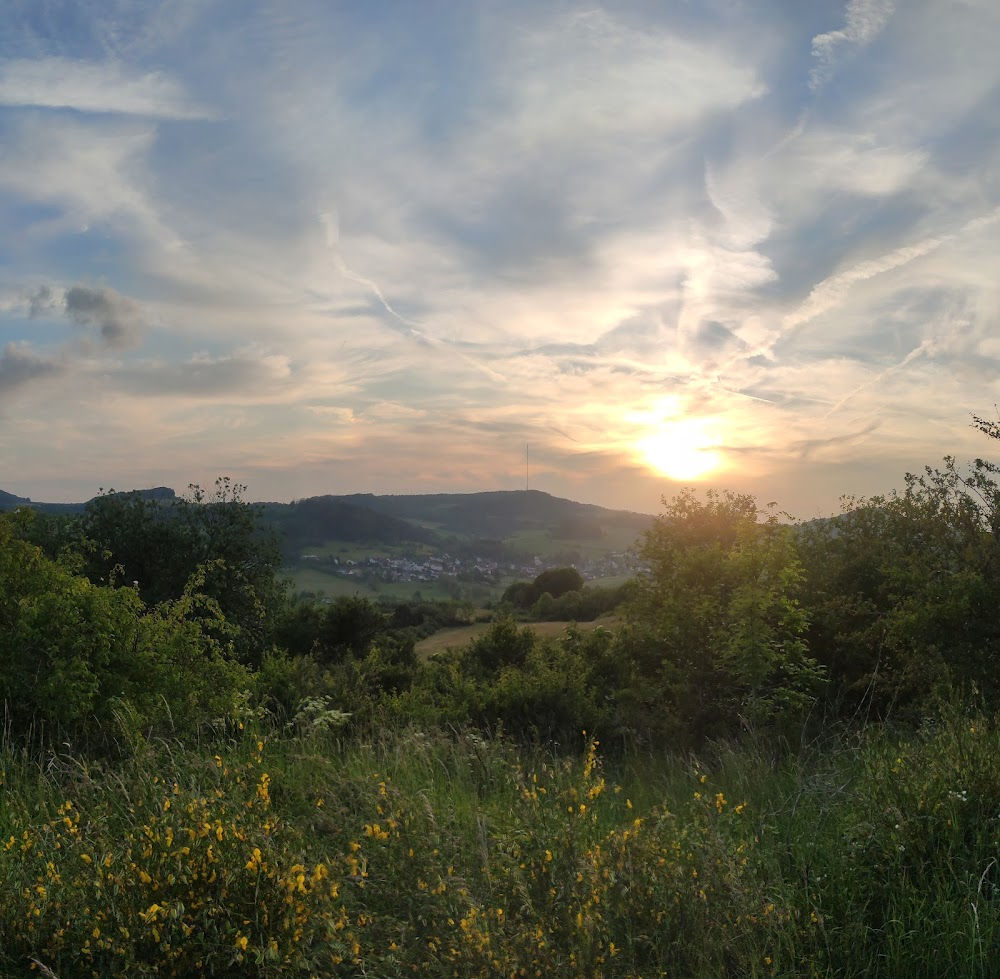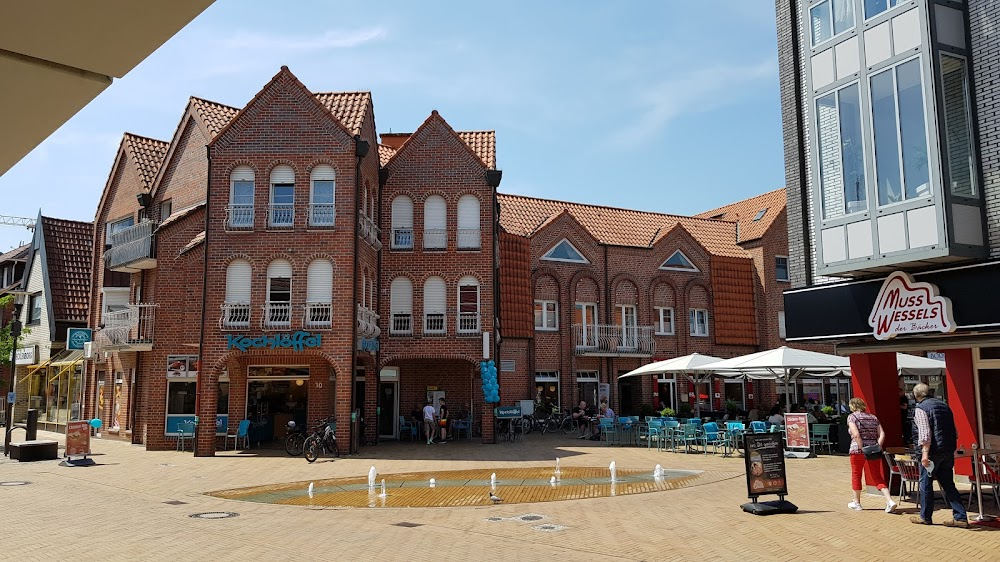GG 19 - Eine Reise durch Deutschland in 19 Artikeln Filming Locations

Where was GG 19 - Eine Reise durch Deutschland in 19 Artikeln filmed? GG 19 - Eine Reise durch Deutschland in 19 Artikeln was filmed in 20 locations across Germany in the following places:
GG 19 - Eine Reise durch Deutschland in 19 Artikeln Filming Locations
Berlin, Germany’s capital, dates to the 13th century. Reminders of the city's turbulent 20th-century history include its Holocaust memorial and the Berlin Wall's graffitied remains. Divided during the Cold War, its 18th-century Brandenburg Gate has become a symbol of reunification. The city's also known for its art scene and modern landmarks like the gold-colored, swoop-roofed Berliner Philharmonie, built in 1963.
Bremen is a city straddling the Weser River in northwest Germany. It’s known for its role in maritime trade, represented by Hanseatic buildings on the Market Square. The ornate and Gothic town hall has a Renaissance facade and large model ships in its upper hall. Nearby is the Roland statue, a giant stone figure symbolizing freedom of trade. St. Peter’s Cathedral features medieval crypts and twin spires.
Bremerhaven is a port city on Germany’s North Sea coast. The German Maritime Museum at the Old Harbor details the national and regional history of shipping and navigation. Its collection includes the Bremen cog, a restored medieval vessel. Nearby, the WWII submarine Wilhelm Bauer has been converted into a museum. The German Emigration Center is dedicated to the history of those who left Bremerhaven for America.
Darmstadt is a city near Frankfurt in southwest Germany. It’s known for the Mathildenhöhe district's art nouveau buildings, like the iconic Wedding Tower. Museum Künstlerkolonie features art nouveau glass, textiles and jewelry. Hessisches Landesmuseum displays art by Joseph Beuys. Northeast, the Messel Pit has Eocene-era fossils. To the south is ruined Frankenstein Castle, which may have inspired the famed book.
Görlitz is a town in eastern Germany, on the Polish border. It’s known for its well-preserved old town, where buildings of different eras show off a wealth of architectural styles. St. Peter’s is a late-Gothic church, with 2 steeples and the early-18th-century Sun Organ. The early-Renaissance Schönhof and adjacent buildings are home to the Silesian Museum, displaying German, Polish and Czech art and history.
Halle is a city in central Germany. Opposite its 16th-century church Marktkirche Unser Lieben Frauen is the Roter Turm, a landmark Gothic bell tower. The Händel-Haus is the former home of the famed baroque composer, with exhibits on his life and music. Modern and classical art is on display at the Kunstmuseum Moritzburg, in a restored Renaissance castle. The Zoological Garden includes a section on mountain animals.
Hamburg, a major port city in northern Germany, is connected to the North Sea by the Elbe River. It's crossed by hundreds of canals, and also contains large areas of parkland. Near its core, Inner Alster lake is dotted with boats and surrounded by cafes. The city's central Jungfernstieg boulevard connects the Neustadt (new town) with the Altstadt (old town), home to landmarks like 18th-century St. Michael’s Church.
Haren is a town in Lower Saxony, Germany in the district of Emsland.
Karlsruhe is a city in southwestern Germany. Housed in a former weapons factory, the vast ZKM Center for Art and Media includes video, audio and interactive installations. In the city center, the tower of the 18th-century Karlsruhe Palace offers views of Karlsruhe's fan-shaped layout. The palace houses the Baden State Museum, with exhibits spanning prehistory to the present.
Kiel is a port city on Germany’s Baltic Sea coast. In the old town, the rebuilt, medieval St. Nikolai Church hosts classical concerts. Holstenstrasse and Dänische Strasse are streets lined with shops. Along the Kiel Fjord, the Maritime Museum displays model ships and nautical instruments in a former fish auction hall. Cruise ships dock at the Ostseekai Terminal in Germania Harbor.
Langenfeld is a town in North Rhine-Westphalia in the district of Mettmann. The suburban city is located between Düsseldorf and Cologne. Langenfeld was formed from the two localities of Richrath and Reusrath and received city rights in 1948.
Lübben (Spreewald) is a town of 14,000 people, capital of the Dahme-Spreewald district in the Lower Lusatia region in Brandenburg, in eastern Germany.
Munich, Bavaria’s capital, is home to centuries-old buildings and numerous museums. The city is known for its annual Oktoberfest celebration and its beer halls, including the famed Hofbräuhaus, founded in 1589. In the Altstadt (Old Town), central Marienplatz square contains landmarks such as Neo-Gothic Neues Rathaus (town hall), with a popular glockenspiel show that chimes and reenacts stories from the 16th century.
Regensburg, a Bavarian city on the Danube River in southeast Germany, is known for its well-preserved medieval core. The 12th-century Stone Bridge, a 310m-long icon with 16 arches, crosses the river to the old town. The 13th-century Regensburg Cathedral, a twin-spired Gothic landmark, is home to the Regensburger Domspatzen choir. Walhalla, a Parthenon replica just east of the city, honors illustrious Germans.
Saarbrücken is the capital and largest city of the state of Saarland, Germany. Saarbrücken has 181,959 inhabitants and is Saarland's administrative, commercial and cultural centre.
Schwerin is the state capital of Mecklenburg-Vorpommern in northern Germany. It's known for Schwerin Castle, a neo-Renaissance palace with ornate rooms and elaborate gardens. The castle sits on an island in Lake Schwerin, one of several picturesque lakes. The Staatliches Museum Schwerin has 17th-century Dutch and Flemish paintings, including works by Peter Paul Rubens. In the old town is Gothic Schwerin Cathedral.
Schwäbisch Hall is a city in the German state of Baden-Württemberg located in the valley of the Kocher river, the longest tributary of the Neckar river. The closest larger city is Heilbronn, and Schwäbisch Hall lies north-east of the state capital of Stuttgart. It is the seat of the district of Schwäbisch Hall.
Weimar is a city in central Germany. It's known as the birthplace of Weimar Classicism, a humanistic cultural movement. The Goethe & Schiller Monument in front of the German National Theater celebrates the 2 writers, who lived in the city. Goethe’s baroque residence is now the Goethe National Museum. The Schiller Museum is adjacent to the writer’s home. Bauhaus Museum Weimar has works by architect Walter Gropius.
Wuppertal is a city in western Germany. It's known for its Schwebebahn, a suspension monorail dating from 1901. The Von der Heydt Museum has works by impressionists and Dutch Masters. The Museum of Early Industrialization features textile machinery and steam engines. The Engels-Haus museum is dedicated to Friedrich Engels, co-founder of Marxist theory. Waldfrieden Sculpture Park exhibits large modern works.
GG 19 - Eine Reise durch Deutschland in 19 Artikeln (2007)
GG 19 is a cinematic journey through Germany within 19 articles. Á la short cuts, in 19 stories, the fundamental rights of the Federal Republic of Germany become an emotional experience. Not didactic or even edifying, but always experience-oriented, the spectator is sent to an exciting tour through Germany with humorous, dramatic, also absurd, but unfailingly with stories that are obliged to the acting characters. An experiment, 1 film with 19 stages, an adventure for every participant and a totally new experience with the own home country, with Germany - a tour d'Allemagne.




